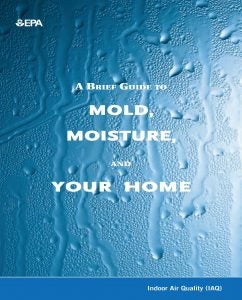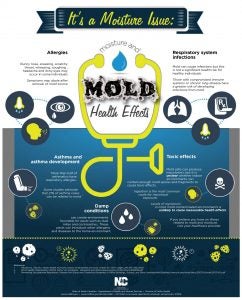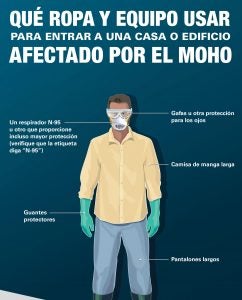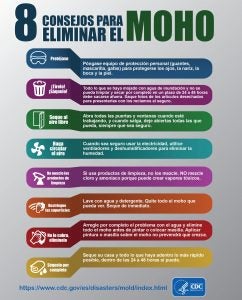Mold and Moisture Cleanup
East Carolina University has accumulated the following resources for dealing with mold and moisture cleanup after natural disasters.
Mold removal and home repairs are serious projects that may be difficult or dangerous, so it may be best to get help from a professional. If you must remove the mold yourself, follow these steps:
- Wear Protective Gear: If you are removing any damaged property on your own, make sure you wear protective eye masks or goggles, filter face masks, gloves, a long-sleeved shirt, long pants, and waterproof boots to avoid contact with the mold.
- Dry the Structure: Clean and dry the structure as quickly as possible. If your house has been empty for several days, open the doors and windows to let the house air out for at least 30 minutes before you stay for any length of time. Open inside doors, especially closets and interior rooms. Open kitchen cabinets and bathroom vanity doors, and wipe them clean.
- Circulate Air: When electricity is safe to operate, use fans and dehumidifiers to remove moisture. Position fans to blow air out doors and windows.
- Remove All Contaminated Materials: Ensure that you have located all contaminated structural materials and personal property. Remove and dispose of anything that was wet and can’t be cleaned and dried completely.
- Cleaning the Property: Clean with water and detergent. Remove all mold you can see. Dry right away. If you use cleaning products, do not mix cleaning products together. DO NOT mix bleach and ammonia because it can create toxic vapors. After you finish cleaning the home, shower and change your clothes as soon as possible. This will help you avoid carrying mold and other hazards back to your current living quarters.
- Repairing the Property: Painting or caulking over mold will not prevent mold from growing. Fix the water or moisture problem completely and clean up all the mold before you paint or caulk. All mold must be removed and all areas must be disinfected before repairs can begin.
- Take Pictures and Keep Receipts: If possible, take pictures of the damage before you make repairs to your home. Keep receipts for all out-of-pocket repair expenses to show to insurance and/or FEMA inspector. This will ensure they have the most accurate analysis of the damage and out-of-pocket expenses for their report.










